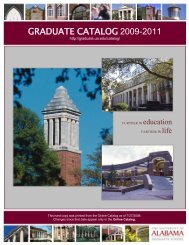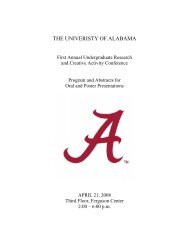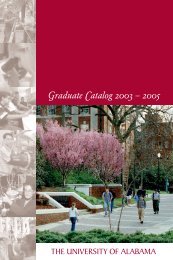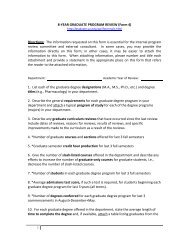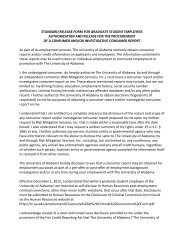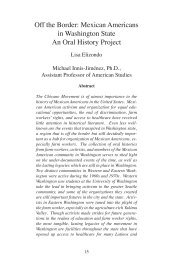Letters from a Planter's Daughter: Understanding Freedom and ...
Letters from a Planter's Daughter: Understanding Freedom and ...
Letters from a Planter's Daughter: Understanding Freedom and ...
Create successful ePaper yourself
Turn your PDF publications into a flip-book with our unique Google optimized e-Paper software.
Even what the archive reveals, rather than what it hides, can tempt<br />
researchers to exert power over historical subjects. 16 The personal distress<br />
Susanna’s 4 June letter expresses may move a scholar to wish she could<br />
write melodrama. 17 The significance the researcher herself attributes to a<br />
source, or a fact within a source, can make it a fiction—a drama, a tragedy.<br />
Retroactively, the narrator makes an historical individual a player on<br />
a stage of her own construction. Susanna Townsend was, in her present,<br />
an actor in the sense of an historical agent, not an actor in an historical<br />
script written for her over a century later. When the curtain falls on Susanna<br />
Townsend’s life, a brief enumeration of facts could all too easily turn<br />
her into the heroine of a painful romance, perhaps the “tragic mulatta” of<br />
nineteenth-century sentimental fiction. 18 We could write her as an orphan,<br />
born of illicit intimacy between a white master <strong>and</strong> his slave, young <strong>and</strong><br />
fair <strong>and</strong> beautiful. We could emphasize her own relationship with a white<br />
man, her unexpected pregnancy, her untimely death. We could belabor<br />
her youth <strong>and</strong> sexual vulnerability in a plot as muddled <strong>and</strong> melodramatic<br />
as her family history—<strong>and</strong> in all these ways turn a woman who lived <strong>and</strong><br />
breathed into a textual trope. In the nineteenth-century, antislavery writers<br />
used the “tragic mulatta” to point to the evils of plantation slavery, both<br />
in terms of sexual exploitation of women <strong>and</strong> the dangers of “miscegenation.”<br />
Such stories contemplated what freedom <strong>and</strong> independence meant<br />
for mixed-race women <strong>and</strong> men, characters who were “the fictional symbol<br />
of marginality”—the very questions I wish to explore in the life of<br />
Susanna Townsend. 19 The line between writing an historical narrative <strong>and</strong><br />
a romance is clearly thin, <strong>and</strong> fiction can all too often prove both easier to<br />
execute <strong>and</strong> far more “seductive.” 20<br />
But the attempted reconstruction of a life requires empathy, <strong>and</strong> how<br />
can we underst<strong>and</strong> or share the feelings of another person without the<br />
151<br />
<strong>Letters</strong> <strong>from</strong> a Planter’s <strong>Daughter</strong><br />
16 Trouillot, Silencing the Past, 26.<br />
17 Saidiya Hartman grappled eloquently with the limitations of the archive: “History pledges<br />
to be faithful to the limits of fact, evidence, <strong>and</strong> archive, even as those dead certainties are<br />
produced by terror. I wanted to write a romance that exceeded the fictions of history,”<br />
Saidiya Hartman, “Venus in Two Acts.” Small Axe, Vol. 26, (June 2008), 9.<br />
18 Eva Raimon, The “Tragic Mulatta” Revisited: Race <strong>and</strong> Nationalism in Nineteenth-<br />
Century Antislavery Fiction. (New Brunswick, New Jersey: Rutgers University Press<br />
2004), 5.<br />
19 Raimon, The “Tragic Mulatta,” 5.<br />
20 Marisa J. Fuentes, “Power <strong>and</strong> Historical Figuring: Rachael Pringle Polgreen’s Troubled<br />
Archive. Gender & History, Vol. 22 (November 2010), 574.



